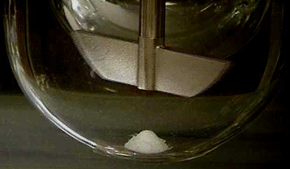It is often described in literature that method developments for poorly/sparingly soluble drugs pose special challenges, thus, may require a more careful and elaborate approach. Such views do not appear to be convincing.
First of all a dissolution test is conducted for a product (tablet/capsule) not for a drug. Therefore, if the product (formulation/manufacturing) remains the same, containing either a freely or sparingly soluble drug, then the same method should perform well. However, the difference will be in the monitoring (quantitation). If an appropriate medium is not used, then quantitation would either be erratic or not possible for low solubility drugs.
On the other hand, often quantitation does not cause problems, because as a fundamental requirement, a dissolution test should only be conducted under a sink condition i.e. the expected amount of drug from the product must be freely soluble in the medium. This “sink” condition is established prior to method development. Therefore, it is important to note that high or low solubility relates to general aqueous solubilities of drugs, not to dissolution medium or testing. For a dissolution test a drug must be freely soluble, therefore, both (high and low solubility drugs) are equivalent for dissolution testing.
 The question is then why do the products of these two types of drugs often behave differently in dissolution testing so that they required a different classification or different approaches. The reason is that it is because of the poor interaction between the product (disintegrated) content and the dissolution medium. Due to poor hydrodynamics within dissolution vessels, paddle and basket, the product contents tends to accumulate at the bottom. This accumulation is known as “cone” formation (as shown in the picture). Often such pronounced “cones” are not observed with the basket apparatus, but similar accumulation/settling of the product contents at the bottom of the vessel is present. Depending on the size of the “cone”, the release of the drug from the “cone” will be different, mostly slower and erratic than expected. The size and shape of the “cone” will depend on the excipients (nature and amount). Bulkier and larger amounts of excipients would have a greater impact. In short, it is not a problem because of the low aqueous solubility of a drug or the product itself, but poor hydrodynamic (stirring and mixing) in a dissolution vessel whether it is paddle or basket apparatus. Unfortunately, this is an inherent weakness of the paddle and basket stirrers and cannot be resolved.
The question is then why do the products of these two types of drugs often behave differently in dissolution testing so that they required a different classification or different approaches. The reason is that it is because of the poor interaction between the product (disintegrated) content and the dissolution medium. Due to poor hydrodynamics within dissolution vessels, paddle and basket, the product contents tends to accumulate at the bottom. This accumulation is known as “cone” formation (as shown in the picture). Often such pronounced “cones” are not observed with the basket apparatus, but similar accumulation/settling of the product contents at the bottom of the vessel is present. Depending on the size of the “cone”, the release of the drug from the “cone” will be different, mostly slower and erratic than expected. The size and shape of the “cone” will depend on the excipients (nature and amount). Bulkier and larger amounts of excipients would have a greater impact. In short, it is not a problem because of the low aqueous solubility of a drug or the product itself, but poor hydrodynamic (stirring and mixing) in a dissolution vessel whether it is paddle or basket apparatus. Unfortunately, this is an inherent weakness of the paddle and basket stirrers and cannot be resolved.
In conclusion, classification of high (freely) or low (sparingly) solubility drugs do not appear relevant for drug dissolution test purposes.
